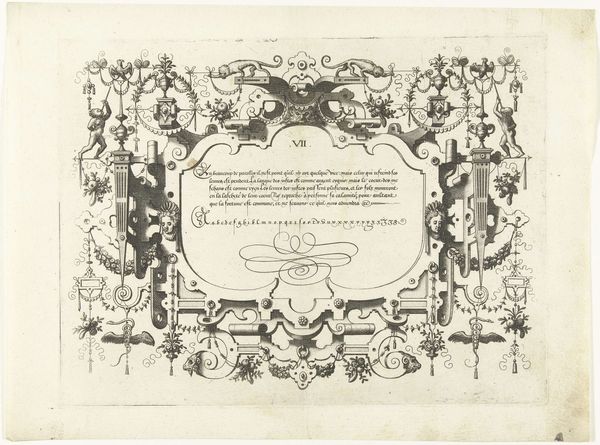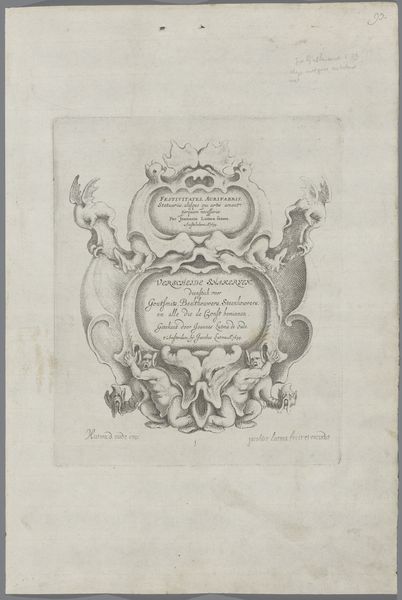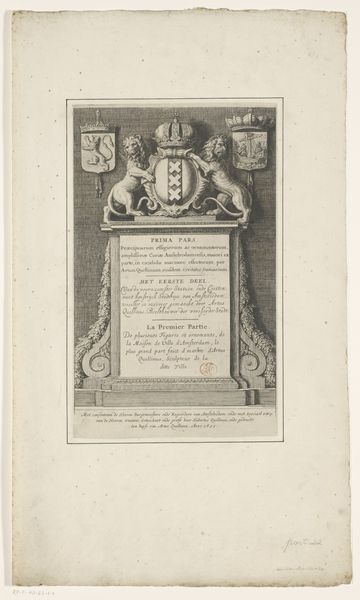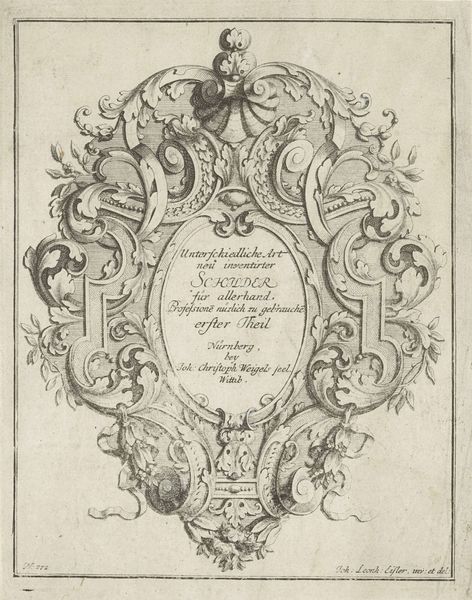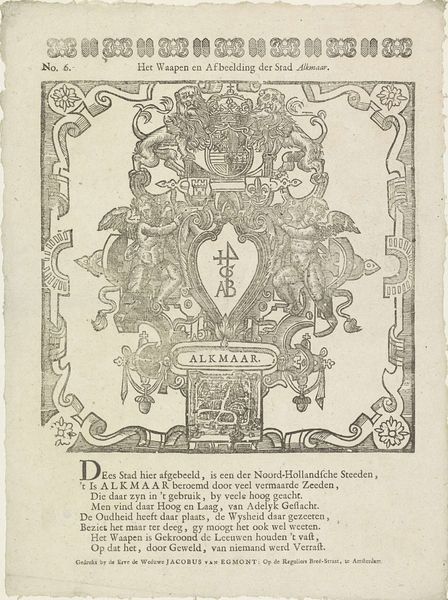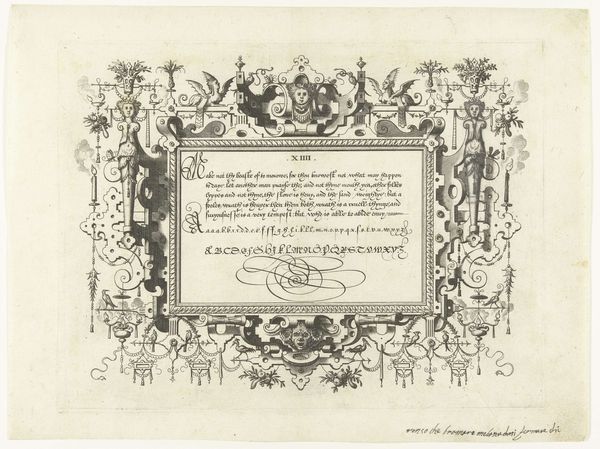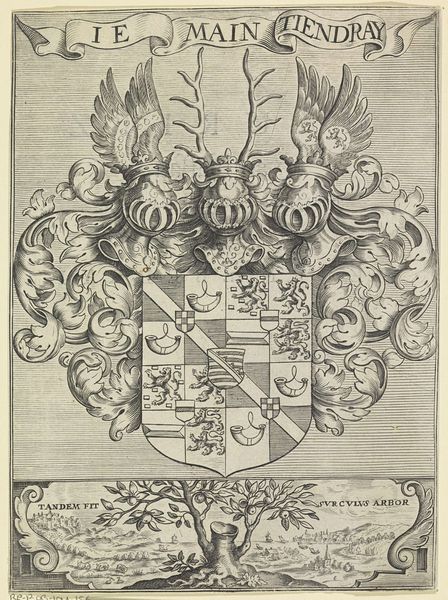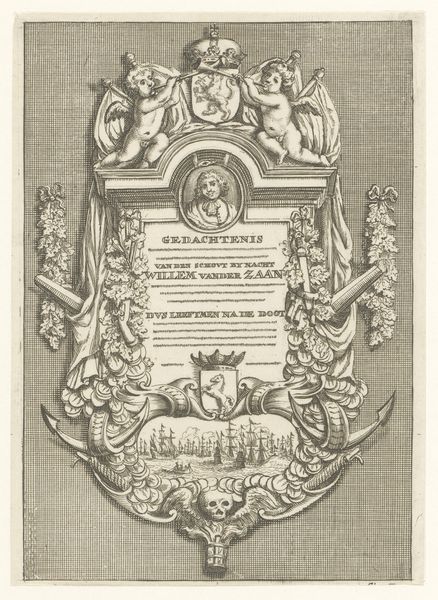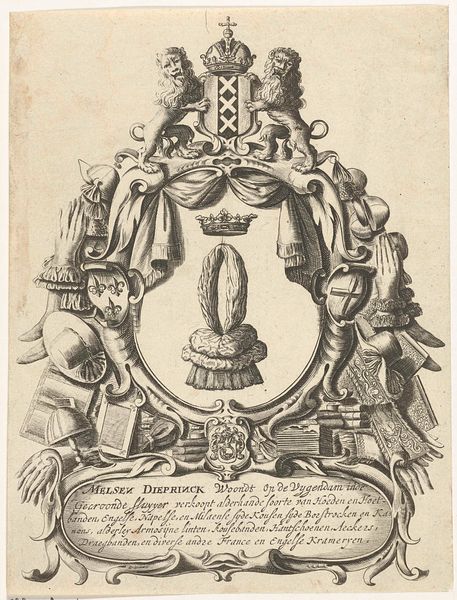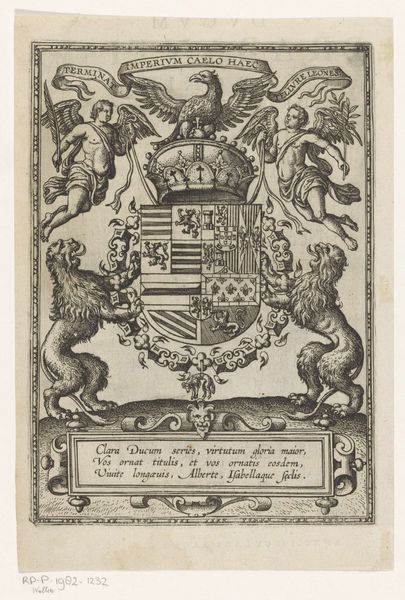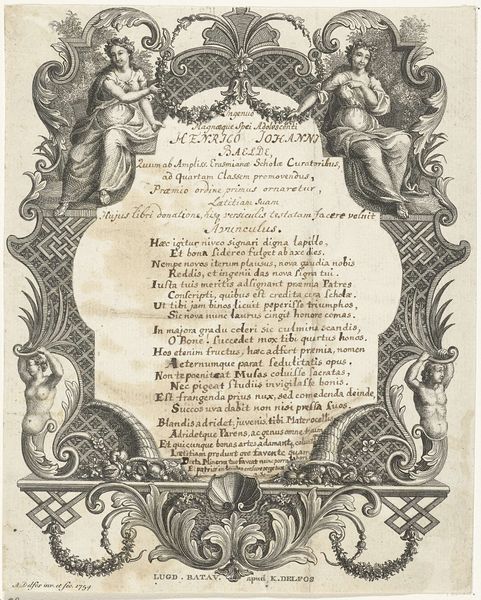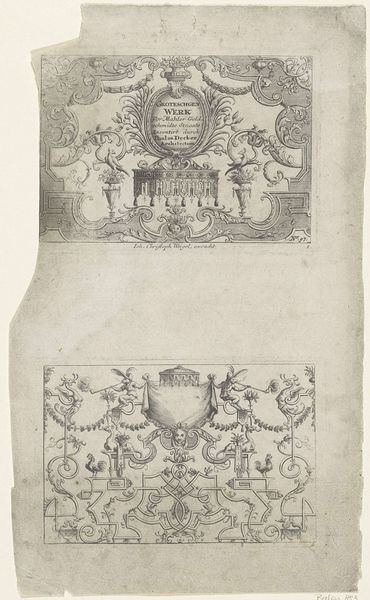
drawing, print, pen, engraving
#
drawing
#
medieval
#
baroque
#
pen drawing
# print
#
old engraving style
#
line
#
pen
#
history-painting
#
engraving
Dimensions: height 179 mm, width 135 mm
Copyright: Rijks Museum: Open Domain
Curator: It strikes me as regal, albeit with an interesting austerity—quite the interplay of bold symmetry and stark linework. Editor: Precisely. What we're observing is a print titled "Wapenschild van een niet-geïdentificeerde eigenaar," or "Coat of Arms of an Unidentified Owner," created by Pierre Nolin in 1652. Its creation is a testament to Nolin's engraving skill, employing line and pen techniques. What do you make of the baroque detailing? Curator: From a purely formal perspective, the detail is remarkable. Observe how Nolin balances the composition with the heraldic shield centrally positioned, flanked by those robust lions. And, the flourishes above are exquisitely rendered. Semiotics and structure meet perfectly. But let’s consider why. Editor: Materially, engraving allows for dissemination— suggesting an attempt at broad, or perhaps targeted, social recognition for its bearer. This isn’t merely about aesthetics, but about the consumption of identity, the manufacture of status via reproducible images. And the printing process itself, from workshop to patron, introduces all sorts of relationships of production. Curator: That’s an intriguing take on dissemination and the making of art. I am more inclined to see it as an appeal to certain established tastes—notice the artist is using elements of composition to construct the viewer's impression. Editor: Is that truly its sole function? Perhaps Nolin was equally, if not more, concerned with the commissions and the system that upheld such representations? Even without identifying the owner, this image performs its own cultural work, reinforcing social structures. Curator: Perhaps both views have merit. This baroque image of the crest is full of a sort of social longing, an aspirational character communicated through form. Editor: I find this piece quite revealing—an invitation into the complex social landscape of 17th-century identity, and how artistic production played its part. Curator: Indeed, it’s where skilled craft becomes a document, a silent advocate in a world preoccupied with lineage and status. A real historical and artistic gem to explore.
Comments
No comments
Be the first to comment and join the conversation on the ultimate creative platform.
